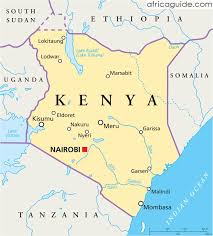Folktale and Story-Telling Tradition from Kenya
Folk and Fairy Tales from Kenya have a slightly different outlook on life and the overview of how it is trying to be transcribed. The African "Orature" is oral lecture and oftentimes being displayed and recited orally. The tales create a sense of identity and a social foundation. They also affirm the identity of one by revealing who they are and support the reasons behind their present beliefs. Most tales are recited to younger generations, but the details may be altered. The overall message and structure of the story stays the same but the supporting details change from person to person.
 This can be different from traditional tales we have read because they do not all base their lifestyles off of them and they can oftentimes be deterred. They are presented orally, but once they are written down on paper they become clear cut and only recited that way. They do not go back and change up the story line. To me tis messes with the authenticity of the tale.
This can be different from traditional tales we have read because they do not all base their lifestyles off of them and they can oftentimes be deterred. They are presented orally, but once they are written down on paper they become clear cut and only recited that way. They do not go back and change up the story line. To me tis messes with the authenticity of the tale.
In Kenya the tales also have a very specific job. They make it so the people are nicer to one another and see the true value in strangers. Fairytales teach you to not be selfish and they incorporate songs. These songs are used to re-emphasize main points, create a dramatic effect, and create episodes and parts.
In the tales we have read they mostly have a cliche message. They do not normally contain songs. They are geared towards children and try to be clear and to the point. They are not as detailed and implicit as the tales from Kenya.
 Lastly, the Kenya fairytales have a significance of celebrating writ and quick thinking. They create a common understanding of phenomena and sustain the history of a people/community. Memories are shared because memories of a community can relate to a story because of shared experiences. Nevertheless, the community in Kenya continues to thrive and grow so I think we should implement some of the tactics to our tales we read.
Lastly, the Kenya fairytales have a significance of celebrating writ and quick thinking. They create a common understanding of phenomena and sustain the history of a people/community. Memories are shared because memories of a community can relate to a story because of shared experiences. Nevertheless, the community in Kenya continues to thrive and grow so I think we should implement some of the tactics to our tales we read. 
Comments
Post a Comment